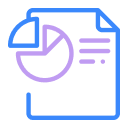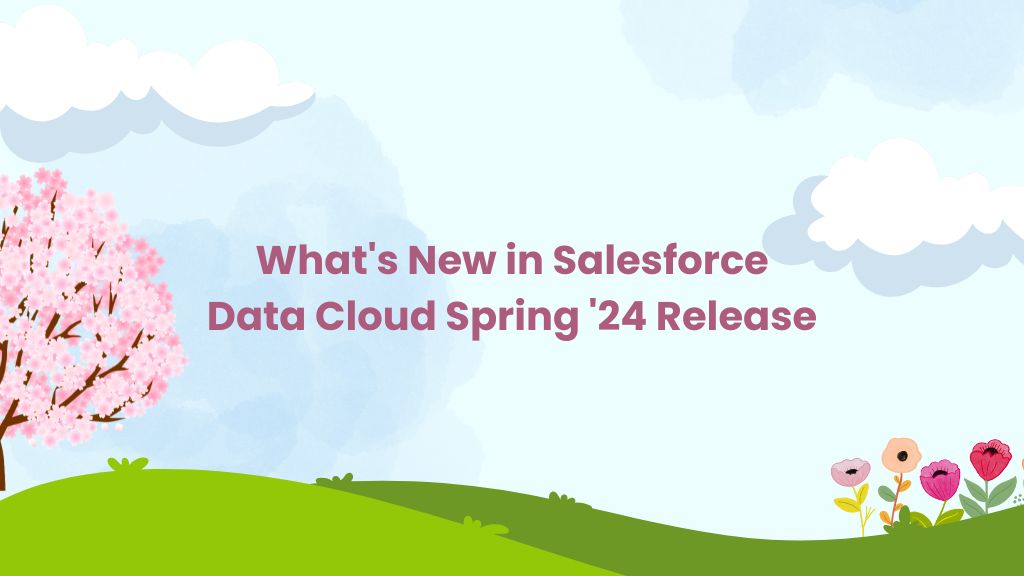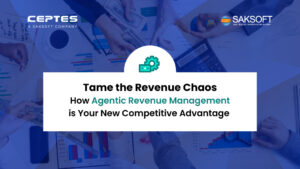The Salesforce Data Cloud Spring ’24 release brings a wealth of innovative features and enhancements to maximize the value of data for businesses.
With real-time data processing, AI-powered insights, improved data governance, and seamless integration capabilities – Salesforce Data Cloud is all set to make enterprise data more actionable across Salesforce applications and workflows.
Why does it matter?
85% of IT leaders expect AI to increase developer productivity in their organizations in the next few years. But 62% say their organization isn’t yet equipped to harmonize data systems to fully leverage AI. Data fragmentation and data silos are causing a major hindrance to leveraging their data effectively.
Unified customer data and real-time processing capabilities of Data Cloud ensure that companies can deliver personalized experiences and respond quickly to changes. AI-powered insights and advanced analytics provide deeper understanding and foresight, enabling better decision-making. Improved data governance and security help maintain compliance and build trust with customers. And, enhanced collaboration tools foster innovation and streamline operations, driving overall efficiency and growth.
Let’s dive deeper into the key enhancements of Data Cloud in Salesforce’s Spring ‘24 Release and how they can help businesses.
Key Enhancements in the Spring ’24 Release:
Data Spaces Now Generally Available (GA):
Data Spaces allow logical segregation of data, metadata, and processes.
Why is it important?
This is crucial for departments that need to comply with specific regulatory or compliance requirements. For example, a healthcare company can separate patient data from administrative data to meet HIPAA regulations.
Model Builder Now GA:
Customers can build AI models tailored to specific tasks using a no-code, low-code, or pro-code approach. This feature allows customers to select data from LLMs managed by Salesforce or bring their own Data Models (BYOM). Businesses can also use AI models from Salesforce partners like Amazon Bedrock, Amazon SageMaker, Anthropic, Cohere, Databricks, Google Cloud’s Vertex AI, and OpenAI. These models can be trained on Data Cloud data directly, without the need to move or copy the data. This makes it easier and more efficient for businesses to integrate and utilize advanced AI technologies in their operations.
Why is it important?
Businesses can create predictive models without extensive coding knowledge. For instance, a retail company can build a model to predict inventory needs based on sales data, improving stock management and reducing costs.
Data Cloud-Related Lists Now GA:
This allows real-time engagement data from Data Cloud to be surfaced across the Einstein 1 Platform in a Related List on any Salesforce Object.
Why is it important?
B2B companies can enrich leads, contacts, and account records with real-time data. A sales team, for example, can access up-to-date engagement data directly within their CRM to tailor their pitches more effectively.
Data Cloud Copy Fields Now GA:
This feature lets businesses copy data from Data Model Objects or Calculated Insight Objects into specific fields within their CRM, such as Contact or Lead records. This eliminates the need for complex data integrations or custom development.
Why is it important?
By simplifying data integration, businesses can easily enrich their CRM with valuable insights. For example, a marketing team wants to target leads based on their recent website activity. By copying engagement data (such as pages visited and time spent) into the CRM’s lead records, they can create more personalized and effective marketing campaigns, increasing the chances of conversion.
Data Cloud for Industries Enhancements:
With this feature, customers can leverage pre-built connectors, data models, and calculated insights for enhanced industry-specific AI, automation, and workflows.
Why is it important?
This allows businesses to quickly implement industry-specific solutions without extensive custom development, driving faster time-to-value and enabling more effective use of AI and automation. For example, banks can use pre-built financial models to streamline loan approval processes. Also, they can rapidly deploy advanced data models and workflows to enhance customer service, improve risk management, and increase operational efficiency.
Data Graphs Enhancements
This helps in defining relationships between data points without manual SQL queries. Users can trace and rearrange related fields using a simple drag-and-drop interface. Real-Time Data Graphs allow for instant access and updates to customer data. So that any changes in the data are immediately reflected, allowing businesses to have up-to-date information at all times.
Why is it important?
This feature helps businesses easily manage and visualize data connections, making it faster and simpler to create AI applications. For example, a retailer can visually link customer purchases to product details with drag-and-drop using Data Graphs. When a customer buys a product, the purchase data updates instantly. This helps the retailer quickly analyze the buying patterns and tailor marketing campaigns accordingly, boosting sales and customer satisfaction.
Service Intelligence Now GA:
This feature is especially helpful for service teams. Service Intelligence uses AI models to predict the likelihood of a case escalating and the time it will take to resolve it, based on data from Data Cloud.
Why is it important?
This feature empowers service teams to proactively identify and address critical issues, reducing escalations and improving customer satisfaction. The predictive insights can also help them to allocate staff where they are most needed.
Data Cloud Triggered Flows Enhancements:
Data Cloud Triggered Flows automate business processes based on changes in data points or when specific conditions are met. This feature now includes testing and troubleshooting capabilities before activation.
Why is it important?
It streamlines operations by automating responses to data triggers. Testing capabilities ensure flows function as intended, reducing disruptions and improving reliability. For example, an e-commerce company can set up a flow to automatically reorder stock when inventory levels drop below a threshold.
Opportunities for Customers and Partners:
The Spring ’24 release of Salesforce Data Cloud presents numerous opportunities for both customers and partners. For customers, the enhanced data quality, AI-powered insights, and real-time processing capabilities enable more effective decision-making and strategic planning. While, the businesses can leverage these advancements to improve customer engagement, streamline operations, and drive growth. That’s a win-win for both!
For partners, the scalable integration options and advanced analytics tools provide new avenues to offer value-added services. Partners can help customers implement and optimize these features, driving adoption and ensuring that businesses get the most out of their Salesforce investments.
Need guidance on Salesforce Data Cloud? Connect with CEPTES to explore different Salesforce Data Cloud Services and witness your business thrive like never before!


















